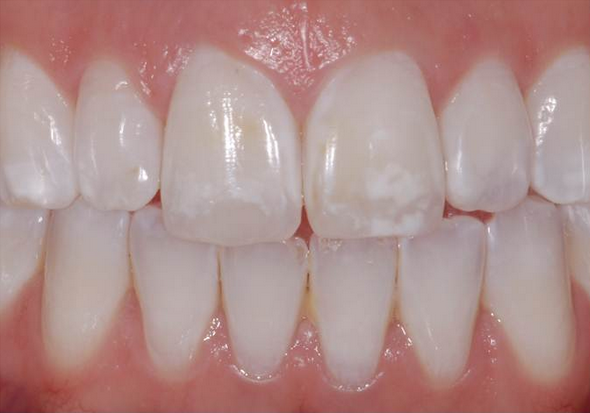The origin of white spots on teeth can vary as much as their colour and location.
Most generally, the reason for the appearance of white spots is an ionic dis-balance between the mineral components in dental tissues – calcium, fluoride and their compounds. Whilst white spots can vary in number and type, more often than not, they manifest on the visible surfaces of the front teeth. Being visible and attracting attention, even harmless white spots can be a cause for discomfort for the patient, requiring an intervention from the dentist.
Innate white spots are caused by hypermineralisation of the tooth, also known as fluorosis. Presenting in lustre-less matte white, primary spots are the result of excessive fluoride exposure, either through the peri-natal and early childhood consumption of fluoride-enriched water, supplements or the mother’s diet. Such spots are harmless and can appear on your child’s tooth at any age up to around their 10th year. Adults can develop secondary white spots due to hypermineralisation, following the use of highly concentrated fluoride toothpaste and mouthwash for prolonged period of time.
White spots aren’t a cause for health concerns, but they are irreversible. If they bother you, do speak with your dentist about possible solutions.
Other conditions could also be represented with a change of the colour of the enamel of the teeth, for example, demineralisation due to decay or imperfections in the development of the teeth, such as hypoplasia. Therefore, it’s important to have white spots on the teeth checked by a dentist, even if they don’t affect you cosmetically.

